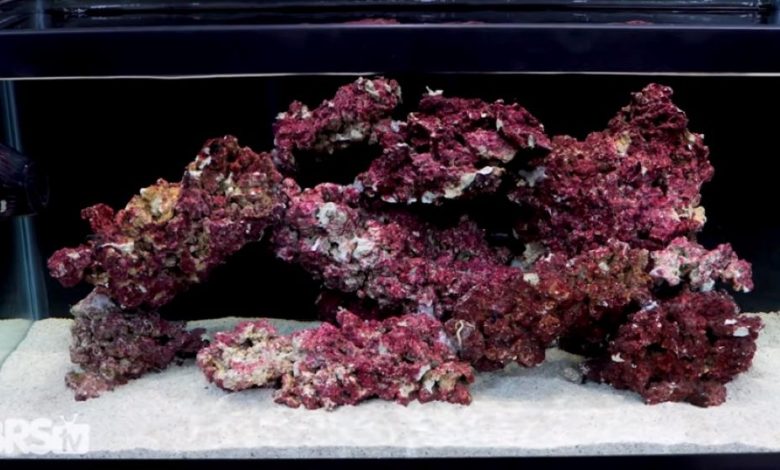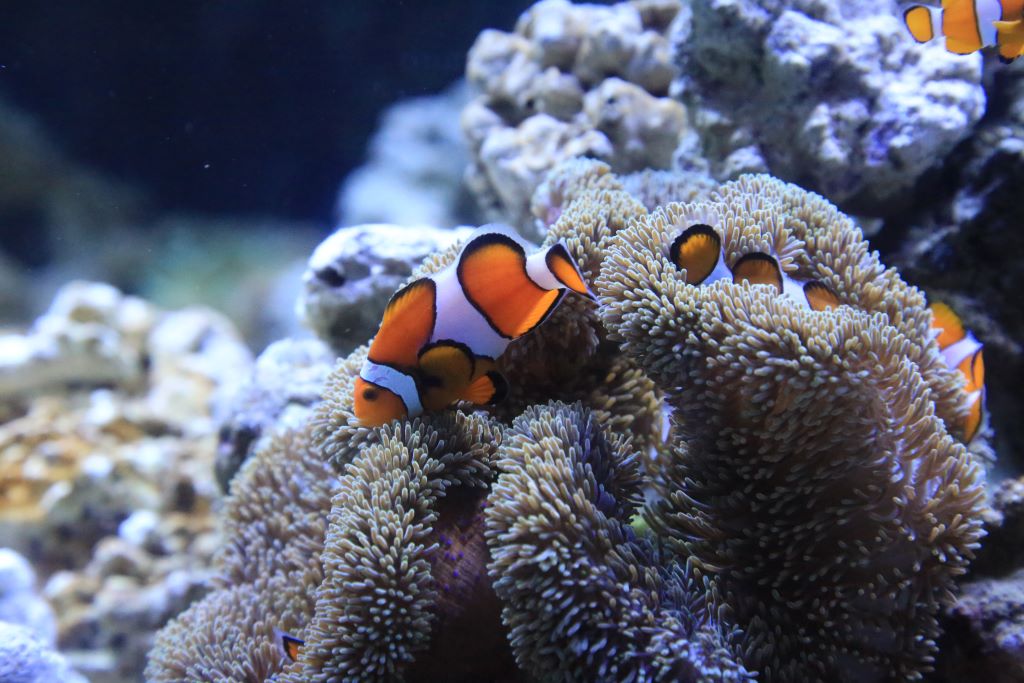
Live rock is the unsung hero of marine aquariums, often touted as a natural, multifunctional tool for enhancing your aquarium’s health and aesthetics. In this comprehensive guide, we’ll dive into the many live rock benefits in marine aquariums, unraveling its secrets to creating a thriving underwater ecosystem. Whether you’re a beginner or a seasoned aquarist, this article will offer actionable insights to make your marine tank flourish. To explore more fascinating aquarium tips, don’t forget to explore Reefaquariumblog.
What Is Live Rock?
Live rock is more than just an aesthetic addition to marine aquariums. It refers to pieces of porous rock teeming with beneficial microorganisms, algae, and even small marine organisms. Typically harvested from the ocean, it becomes “live” after being colonized by these life forms.
- Key Features: Porous surface, biological diversity, and natural appearance.
- Types of Live Rock: Base rock (non-living) and premium live rock (rich in active microorganisms).
Its role extends far beyond decoration—it’s an essential building block for a stable and vibrant marine aquarium.
Why Live Rock Is Essential for Your Marine Aquarium
A marine aquarium’s ecosystem mimics the ocean’s complexity, and live rock plays a central role in achieving this balance. Here are the standout benefits:
-
Enhanced Biological Filtration
Live rock acts as a natural biofilter, housing beneficial bacteria that break down toxic ammonia and nitrites into less harmful nitrates. This filtration ensures stable water parameters, making your aquarium safe for marine life.
Expert Tip: A well-established live rock system can reduce reliance on artificial filtration systems.
-
Creating a Stable Environment for LPS Coral Types
Live rock provides the perfect base for placing and growing LPS coral types, ensuring they receive adequate water flow and lighting. The porous nature of the rock helps mimic their natural habitat, fostering their vibrant colors and growth.
Fact: LPS corals are known for their mesmerizing beauty and benefit greatly from the stability live rock offers.
-
Promoting Biodiversity
Live rock brings a slice of the ocean into your tank. It comes preloaded with:
- Beneficial bacteria.
- Tiny crustaceans like amphipods and copepods.
- Sponges and algae.
This biodiversity fosters a healthy food chain, supporting your fish and coral populations.
-
Improving Water Quality
The microorganisms in live rock naturally reduce nitrates, phosphates, and other impurities in your tank. This nutrient absorption minimizes algae blooms and keeps the water clear.
Stat Insight: Tanks with live rock show a 20-40% improvement in water quality metrics compared to tanks without it.
-
Aesthetic Appeal
Let’s not overlook the visual charm live rock brings. Its natural, rugged appearance complements any marine aquarium setup, creating a realistic underwater landscape.
How to Choose the Right Live Rock for Your Aquarium
The choice of live rock can significantly impact your aquarium’s success. Consider these factors:
- Source: Opt for ethically harvested rock to minimize environmental harm.
- Quality: Look for rocks with diverse coloration and active growths of coralline algae.
- Porosity: More pores mean a higher surface area for bacterial colonization.
Curing Live Rock: A Crucial Step for Success
Curing removes debris and unwanted hitchhikers, ensuring your live rock doesn’t introduce toxins into the tank. Here’s how:
- Pre-Cleaning: Rinse the rock thoroughly.
- Curing Tank Setup: Place the rock in saltwater with strong circulation.
- Monitoring: Test ammonia levels regularly and perform water changes as needed.
Note: Curing can take 2-6 weeks, but patience pays off with healthier live rock.
Shining a Light on the Subject: Do Fish Need Aquarium Lights?
Maintenance Tips for Live Rock
Live rock requires minimal care but benefits from regular attention:
- Algae Control: Scrub off excess algae growth.
- Water Flow: Ensure adequate flow to prevent dead spots.
- Observation: Check for unwanted pests like bristle worms and remove them promptly.
You Might Enjoy: How to clean an empty fish tank?
FAQs
What makes live rock different from dry rock?
Live rock is teeming with beneficial organisms and requires less cycling, while dry rock is sterile and takes longer to become active.
Can live rock die?
Yes, if kept out of water for extended periods or exposed to harsh conditions, live organisms on the rock can perish.
How much live rock do I need?
A general rule is 1-1.5 pounds of live rock per gallon of tank water.
Does live rock help reduce algae?
Yes, live rock absorbs nutrients that fuel algae growth, reducing their presence in your tank.
Can I add live rock to an existing tank?
Yes, but it should be cured first to avoid introducing toxins or pests.
Conclusion
Incorporating live rock into your marine aquarium is a game-changer. Its role as a biological filter, nutrient absorber, and aesthetic enhancer makes it indispensable. By carefully selecting and maintaining your live rock, you’re not just building an aquarium—you’re creating a thriving underwater ecosystem.

